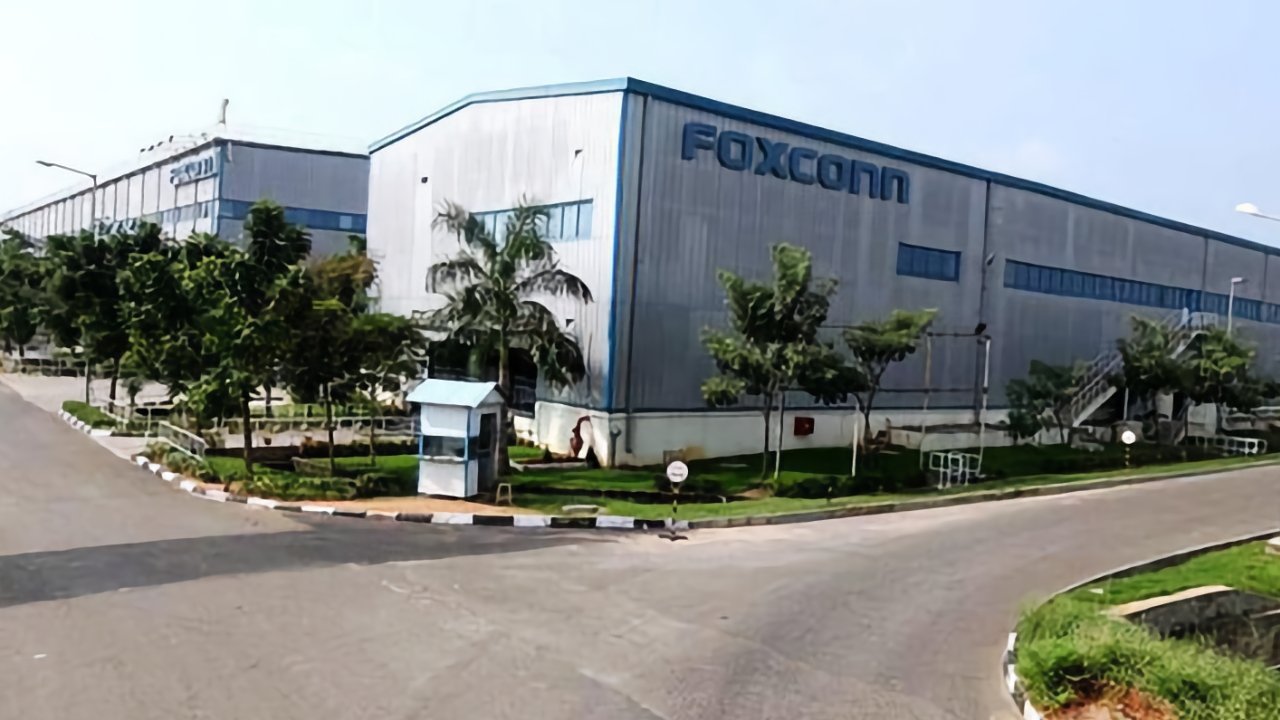Apple wants nearly every iPhone 18 sold in the US to come from India
Apple will reportedly dramatically accelerate manufacturing efforts in India, and may try to import nearly every iPhone 18 sold in the US from the country by the end of 2026. There are reasons to be skeptical that this will happen.

Foxconn's iPhone manufacturing facility in Sriperumbudur, India
Apple has been manufacturing iPhones in India for a few years. Opinions vary on how many devices imported to the US come from the country, but if Friday morning's report first made by the Financial Times is accurate, that number will skyrocket in the next 20 months.
While a lofty goal, we're skeptical about the report. At the moment, India produces about 40 million iPhones per year for both local distribution requirements and export -- a bit less than a fifth of Apple's global iPhone production.
In late 2023, Apple wanted to double iPhone production in India to about 25% of the global share by the end of 2024, which it did not quite accomplish. It grew assembly to about 15% of the global demand.
A previous report said that Apple wants to grow the global assembly share by another 10% in 2025. This also will not get the totals high enough to meet the forecast of Friday's report.
And, even if that 10% growth is accurate, plus Apple is somehow able to shunt all India production to the US, that still means an expansion of about 18 million iPhones assembled per year in the country. This would be the largest year-over-year expansion to date, by about double the volume of what's been accomplished so far per year.
More realistically, including iPhones that Apple is required to make and sell in India to be allowed to manufacture in the country, Apple would have to increase production in India by about 25 million iPhones per year, which is even more daunting.
And that's assuming that China's government will cooperate, plus Chinese companies Foxconn and Luxshare will be allowed to do so. In one famous stonewall, Apple employees and suppliers have had trouble securing work visas in India to work on improving the supply chains.
Also, Chinese authorities have talked to Apple's supply chain partners and other manufacturers to try and encourage them from moving subassembly production outside of the country. At the time, China cited the risk to employment.
While iPhone assembly lines in China work on two 12-hour shifts, Indian labor laws force Apple supply chain partners to have three eight-hour shifts. This required employing more workers in India than China. Though Apple did lobby governments successfully to allow 12-hour shifts, they haven't been implemented due to worker unrest.
There were also issues getting sub-assembly lines working in India. The sourcing of key components at a high enough quality to be approved by Apple proved to be troublesome.
Chinese authorities have also delayed and blocked the shipment of iPhone manufacturing equipment to India, often without any official explanation. And, when in-country, using the hardware was an issue as some system menus were in Chinese, and as such were harder to use by locally sourced labor.
The provenance of Friday's story isn't clear. Financial Times has little perspective on the issue, and cites unnamed sources familiar with the matter.
Read on AppleInsider

Comments
We soldered individual three legged transistors to the board we were working on. They use millions today that are microscopic etches on the circuit board.
They may use a wave soldering device now that too may be obsolete.
There were dramatic iPhone plant capacity increases and large brand new plants planned for India even before the tariffs. I assume these efforts are now greatly accelerated. Foxconn is building the 2nd largest iPhone plant in the world now in India. Prior to tariffs, it was slated to go live in 2027 - I would expect they fast track that to sometime in 2026. This is one of 4 new India plants I believe are planned for the next 3 years
US market needs ~ 60 million units/yr. It will be close, but based on latest India build-out plans they could do that for 2026. If you look out to 2028 and all the plant investments, India should be able to produce 40-50% of all world-wide iPhones
Apple has hit the gas pedal here
‘straw man eliminated.
Interesting to see what labor rules will be implemented in the Apple US manufacturing. ...oh, I forgot... That has to be robots only.
then if they gear a product like 17e around what could be automated for local assembly. To cover the long tail demand over the product life. Plus having the machines in visible locations lets them control the narrative of why it is being done.